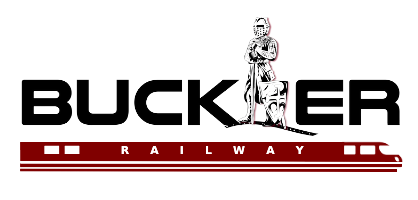Main Categories of Railroad Ties
According to the different materials, railroad ties can be divided into four categories. They are wooden railroad ties, concrete railroad ties, steel railroad ties and plastic railroad ties.
Wooden railroad tie is made of wood, usually hardwood. Wooden railroad ties generally choose tough and elastic wood, such as the treated pine railroad ties and oak railroad ties. The purpose of railroad ties is shock absorption and cushioning, so railroad ties must be elastic and flexible, not too hard and not too soft. Due to its natural properties, wood has become the best choice for railroad ties in the development of railways.
When the train passes through the railway laid by wooden railroad ties, the wooden railroad ties are deformed moderately due to the pressure to cushion the pressure brought by the train. When the train passed, the wooden rail ties returned to their original shape in the first time.
- The wooden railroad tie has the advantages of good elasticity, light weight and wide range of materials.
- The wooden railroad tie has simple manufacturing process, good insulation performance and more price advantage.
- Wooden railroad ties and rail fasteners are easy to connect, laying and maintenance, transportation is very convenient.
- There is an increase in friction coefficient between wooden rail ties and gravel ballast, and the safety performance is higher.
The steel railroad ties are made of steel. Steel railroad ties are usually box-shaped or inverted groove-shaped cross-sections, which are easier to transport with a larger stacking density. Because of the shape factor of the steel ties, it needs less ballast depth and no need to lay ballast again.
Wooden railroad ties
- Steel railroad ties are convenient to transport, simple to install equipment and low cost.
- Steel railroad ties are not easy to happen the gauge spread and derail damage, and easy to maintain in daily life.
- Steel railroad ties are recyclable materials with waste value.
Concrete railroad ties
Concrete railroad tie is made of cement, sand, gravel, high strength rebar and other materials. Because of its composition, concrete railroad ties have long service life, high stability, low maintenance workload, low damage rate and scrap rate. Concrete ties are not afraid of water, sun, corrosion, even in bad environment, can still have a very long service life. The specific advantages are as follows.
- The concrete sleeper rail adopts one-time forming technology, and the appearance is smooth and the texture is hard. It contains multi-thread steel to ensure the toughness of its structure.
- The material of concrete railroad ties are easy to obtain and the cost is controllable. Its specifications are uniform and its elasticity is even.
- Concrete ties are 15-20% more stable than wooden rail ties, so they are more suitable for high-speed, high-volume railway lines.
Plastic railroad ties
Plastic railroad tie is a kind of railroad tie synthesized with new material. So it’s also called composite ties. The synthetic materials of plastic railroad ties include polyurethane resin and long glass fiber. These two materials come from waste tires and recycled plastics, which are very beneficial to environmental protection. This kind of plastic railroad ties absorb the advantages of wooden sleeper, steel sleeper and concrete sleeper, upgrade and optimize them, so that the composite sleeper has a stronger technical advantage. It will be an irreversible trend for plastic railroad ties to be widely used in the world.



